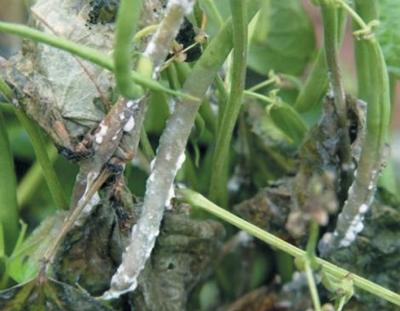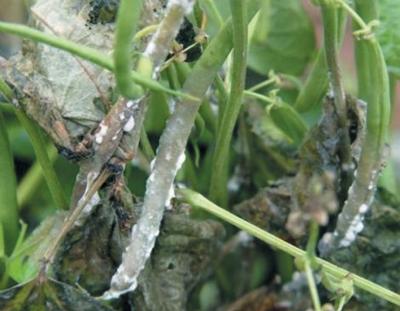

White mould (Sclerotinia sclerotiorum)
It is characterised by a rot at the base of the plant stem. The rot is covered by a cottony, fungal (mycelial) growth on which black irregularly shaped fungal bodies (sclerotia) are produced. Size of sclerotia varies from 2 to 22 mm in diameter. The disease infects the stem and pods. Large, black, round to irregularly-shaped sclerotia of varying size form on stems, which are partially covered with dense white mycelium. Sclerotia are also formed in the stem pith and are conspicuous when the stem is opened. Seeds may become infected within diseased pods. If infected early, seeds are flattened and shrivelled and sometimes replaced by black sclerotia. Attacked plants die prematurely, sometimes before seeds have formed. Infection occurs at flowering. Moderate air temperatures and frequent rains just prior to flowering to the pod development stage of growth favour the disease.
- Use certified disease-free seeds.
- Plant resistant varieties, if available. Early maturing cultivars tend to escape infection because of their usually short stature and early flowering. In contrast, late maturity cultivars are believed to have more disease because of lush vegetative growth and later flowering.
- Avoid planting soybean directly after common bean, sunflower or rape.
- Avoid planting highly susceptible cultivars if row spacing is less than 76 cm in fields with a history of the disease.
- Avoid excessive irrigation until flowering has ceased.
- Use good weed control practices.
